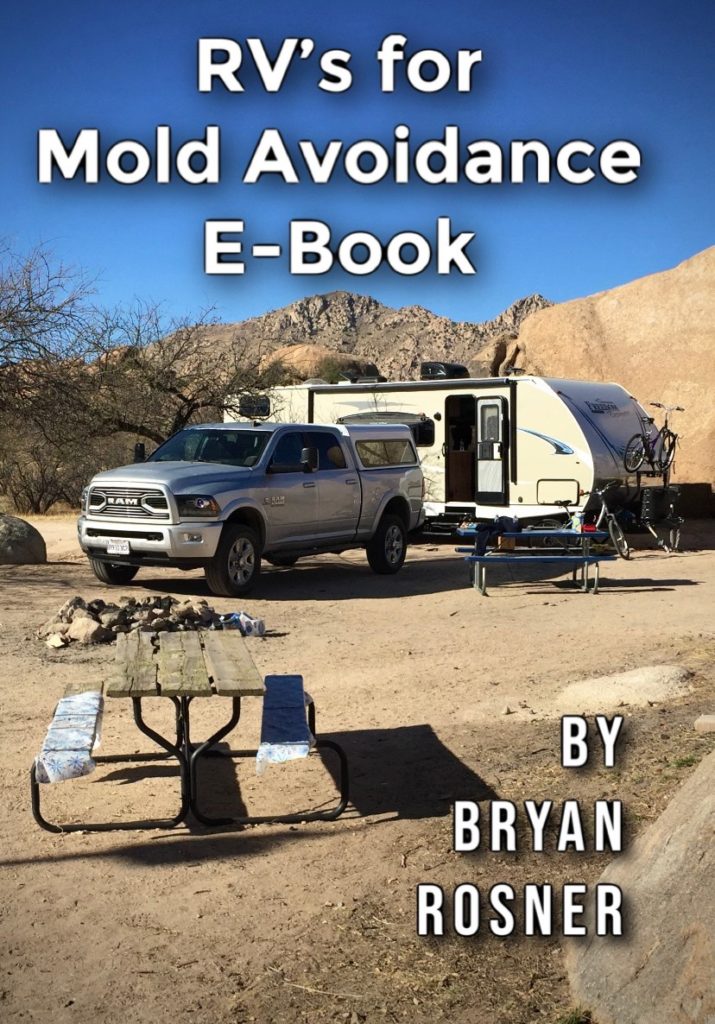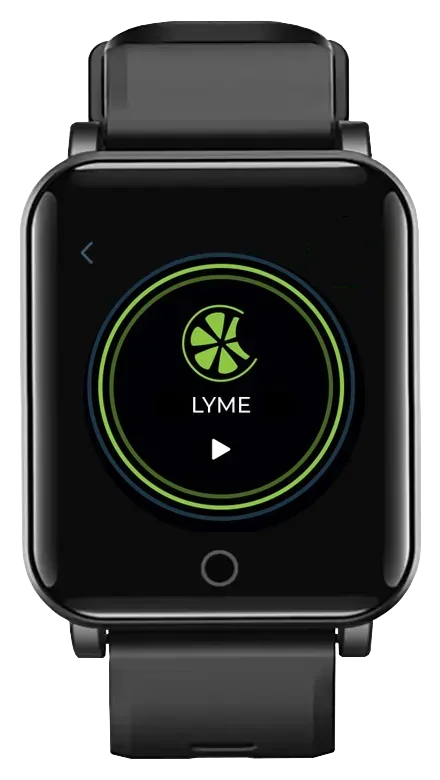I apologize that I haven’t been posting to my Anti-Lyme Journal as often as you’d expect. If you are new to the journal, you can get some of your money’s worth by browsing the many wonderful articles in the archives.
Many of you have heard that I’ve been out sick with what appears to be a moderate case of tetanus. I’ve been in and out of the hospital for the last 2 months. All of this followed a puncture wound I received from a rusty metal marshmallow skewer. I will write more about this experience in coming weeks. At the present time, my condition is stabilizing, though I am still having wild ups and downs, and I am anxiously awaiting some more consistent and predictable days. Interestingly, I have been talking with another Lyme sufferer who had an identical event happen to her – a puncture wound with a rusty object, followed by tetanus-like symptoms.
But what is strange about her case and mine, is that we were both vaccinated as children (tetanus almost never strikes people who were vaccinated as children). Also, both of our cases seem mild to moderate, rather than the fatal cases reported in the literature. These two observations lead me to believe that our bodies are over-reacting, or hyper-sensitive, to the tetanus bacteria. Most “normal” people who have puncture wounds and got their childhood vaccinations would probably not experience the disease as we have. It is likely that our immune systems, and/or remaining damage or infection from Lyme disease, caused our bodies to react abnormally to the tetanus bacteria. Of course, this isn’t surprising, right? Lyme sufferers react abnormally to just about everything! It was a huge blessing to speak with this other woman, because it showed me that this strange tetanus “syndrome” is in fact likely to occur not only in myself, but in others who have a history of tick borne illness and receive a puncture wound. In fact, perhaps there are many other Lyme sufferers out there, who have experienced something similar? Perhaps we can eventually help them, too.
Before this incident, I was relatively healthy, but of course my body and immune system still weren’t perfectly normal due to years of Lyme and related infections. So, it is also possible that this tetanus bacteria “stirred the pot” of underlying problems that had been in remission for years, in my body. I believe this to be the case, because now, as the tetanus symptoms die down a bit, I’m left with the strong feeling that I am having a Babesia flareup, which I haven’t had in years but whose symptoms I eerily recall. (watch me talk about my favorite Babesia supplements here).
As I said, in the coming weeks I’ll write more about this crazy past month. It has been a wild and scary ride, in more ways than one.
For now, though, I wanted to share a few tidbits I’ve learned through this process, which might aid you in your own Lyme fight. Interestingly, tetanus bacteria share some similarities with Borrelia and company. Both bacteria in and of themselves, can be relatively harmless, it is the damage they do to the body that is dangerous, specifically their toxins. In fact, tetanus bacteria without its toxin would be harmless. It is the toxin that makes you sick, not the tiny, insignificant, non-invasive local skin infection it causes. It may surprise you that the tetanus vaccine actually DOES NOT protect your body from the infection itself, it only protects you from the toxin – the vaccine causes your body to create antibodies against the tetanus toxin, not against the bacteria. This is in contrast to most vaccines which cause your body to make antibodies to the bacteria or virus itself. In a nutshell, tetanus is a wimpy non-scary bacteria, with a wicked, scary, horrible toxin. Similar perhaps to a spider bite or rattle snake poison.
Tetanus is VERY hard to diagnose because a) it is so rare that most physicians don’t look for it and haven’t seen it, and b) even in severe tetanus cases in the literature, lab test results are often completely normal, with no fever or elevated white blood cells. The reason for these normal labs is again, that the bacterium itself is harmless, so the body doesn’t attack it. It is the toxin which is deadly, but the body doesn’t really know how to respond to the toxin, so the body just passively stands by while you become extremely ill.
Despite multiple hospitals and specialists, no one could find anything wrong with me. My worst symptoms were rapid pulse (100+ most of the time), labored breathing, insomnia, no appetite and weight loss, mental confusion, burning and tight muscles and jaw, and other muscles, to name just a few. It wasn’t until I saw my local podiatrist that I really started to get help. She performed a surgical debridement of my puncture wound and began me in an intensive wound care / wound healing regimen. I was very excited about this since all the tetanus literature I had read indicated that wound care is of paramount importance, since the wound itself is where the tetanus bacteria live (they are non invasive and so do not become systemic). Hence, caring for and healing the wound eliminates the habitat in which the bacteria thrives.
The illness had struck me so hard that I was in desperate need of help, and there are so many people I have to thank; people who rushed to my aid when I was in dire straights and went out of their way to help me in a number of ways. It really was a humbling month, and changed me in many ways. While I’m sure I have PTSD from the whole experience, I was also humbled by how God worked in my life and showed me each next step I needed to take to continue getting better.
So, moving on to some treatments I used to get better, which have some applicability to Lyme disease…
Much like Lyme disease, I managed the symptoms of the infection by trying to kill the infection, trying to detoxify and bind the toxin, and trying to provide supportive therapies in the meantime. Of course, these measures wouldn’t be sufficient if I had “full blown” tetanus as someone gets who is never vaccinated. But since I was vaccinated, I didn’t have the fatal manifestations – thank God. (With the exception of some very scary breathing issues and elevated pulse, which landed me in the ER six times – yes, SIX TIMES, in the last month).
So again, I’ll talk more about the experience and other aspects later, but for now, here are a few useful tidbits I’ve learned which have cross-applicability in Lyme disease. Mostly these are supplements.
1. Lomatium – this is a very versatile herb that kills many types of pathogens including anaerobic pathogens like clostridium (tetanus is = clostridium tetani). Because even Lyme infections and co-infections require a very broad arsenal, it’s always good to be adding new items to your protocol. Lomatium is a fantastic addition, with multiple uses.
2. Hypochlorous acid sprays and gels. I purchase these made by microcyn, great for wound healing of any type. In fact, this worked better topically than neosporin or any other topical I tried on my wound. It is also gentle and doesn’t damage tissue unlike other anti-infectives like iodine, hydrogen peroxide, etc. Hypochlorous acid kills ALL germs and bacteria instantly. It is a great topical wound care product, and it probably saved my life.
3. Time to revisit products like Boluoke and Serrapeptase. These are earthworm enzymes which digest diseased tissue, you can take them orally on an empty stomach and they scavenge through the body and digest things like Lyme biofilm, cysts, fibrinogin, scar tissue, hypercoagulation, etc. Tetanus bacteria create a blockade in the body where healthy blood isn’t allowed in, so tissue stays diseased and anaerobic. Systemic oral enzyme therapy can help to break down this blockade and allow healing blood into the wound site.
4. Detox modalities such as MicroChitosan help absorb toxins throughout the body (this product is absorbed into the blood stream) so can help you feel better and detox from circulating heavy metals, Borrelia toxins, Herxheimer toxins, and related toxins. Since the livers of Lyme sufferers are generally sluggish, we often have an overload of toxins so this product can help. Chitosan, when micronized, acts as tiny sponges in the blood stream that mop up toxins. Once those toxins get to the gut, however, you should also use a “gut binder”; that is, a supplement which DOES NOT leave the gut and which mops up toxins in the gut only. This is important because gut toxins can recirculate endlessly as they enter the gut through the bile and then are recirculated when the body re-absorbs the bile to reuse it (the body recycles bile). Hence, most “gut binders” are generally things that permanently bind to bile and cause it to be excreted in the feces, preventing it from being reused by the body. Such gut binders include apple pectin, charcoal, fiber, and others.
5. Berberine!!! What an incredible supplement! I’ve used the linked brand here. It’s fantastic. It kills many pathogens, heals the gut from C. Dif infection, heals leaky gut, and has a number of other functions. I’ve never written about it before, so hopefully it will be new to some of you – a new, fresh attack on infections and a new way to stimulate healing in the body.
6. Watch out for resurgent Babesia. I have learned that at the end of Lyme healing, Babesia can be one of the sneakiest infections that VERY SUBTLY creeps back in to the picture, so slowly you almost don’t know it’s happening. It can also rear its ugly head when your body goes through other unrelated trauma. And Babesia can be very pesky and treatment resistant, and require a very multi-faceted approach. Please enjoy this video I made for you with my favorite Babesia treatments.
7. As I mentioned, I met a woman around the time I got my puncture wound who got sick with almost exactly the same thing I did. Which turns out to be, at least my best guess, a mixture of “mild” tetanus causing a flareup in all the other Lyme-related issues we face. A tetanus + Lyme “party” in your body, if you will. What this tells me is that people weakened by Lyme disease may be particularly susceptible to a “mild tetanus” syndrome. So if you do get a puncture wound, look out for this. It’s not clear whether the traditional booster vaccine is useful in this particular strange syndrome, but I got the booster vaccine shot anyway, despite great fears about vaccine side effects. I did not have any side effects that I’m aware of. I also received a tetanus immunoglobulin shot at the hospital, which boosts temporary or “passive” immunity against tetanus. More on this in another blog post.
8. I also benefited from a number of essential oils including Rosemary, Thyme, and several others, drops taken orally. These oils are very powerful and have a number of different qualities, including broad spectrum killing against even antibiotic resistant bacteria.
9. Homeopathy: there have been a number of interesting remedies, including a custom tetanus remedy made by Dr. Gerber in Reno, that helped me.
There were a number of other lessons and observations too, over the past 6 weeks of this strange illness. I’ll be writing more about this in the future, but the above items, I feel, are helpful for Lyme disease, not only tetanus.
If you have any comments or observations, please leave them in the comments section below. What a crazy journey it has been. In many ways, the tetanus experience was much, much worse than Lyme disease. All of the symptoms seemed more acute and life threatening. I am not completely out of the woods yet, but I am hoping the improvement I am feeling will continue. Thank you to everyone who reached out to me with prayers and support, I very much appreciate every single one of you.
I also, again, apologize for not updating this journal as much as I would like to. I promise to get back to regular posts as soon as my health stabilizes.
Until next time,
Bryan
Related: Very interesting reading on another man who fought tetanus, naturally, at home.



You must log in to post a comment. Log in now.